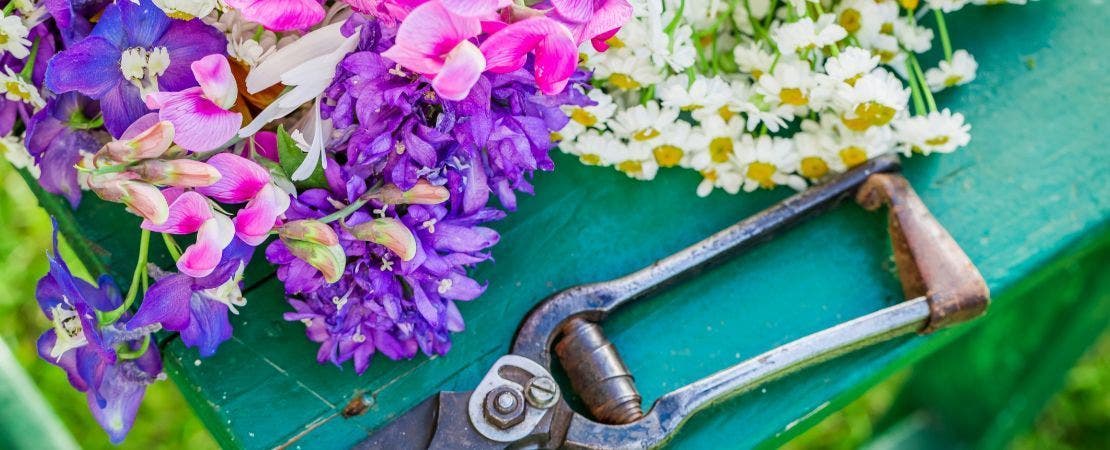Tips for a Fabulous Cutting Garden
Whether you’re snipping roses for a sweetheart, turning hydrangeas into a wedding bouquet or arranging tulips into a classy centerpiece, there are few things as fulfilling for a gardener than presenting your work for all to see. But then there’s the dilemma of choosing to cut from your plants and leave them naked or keep the blooms intact outside while your indoors stays drab and flower-less. Why choose when you can have both? Plant a separate garden specifically for cutting and then snip away! Here are some pro tips to a get started on turning your space into a personal flower factory.


7 Tips for Your Cutting Garden
1. Create a dedicated bed. You will be asking a high level of production from your cutting garden, which means you will want to feed and water these plants more frequently. Therefore it is convenient to have your cut flowers in their own bed.
2. Plant in rows rather than clusters. This gives your flowers enough room to “eat” and “drink” heavily—it takes a lot of energy to create bloom after bloom.
3. Stagger your plantings for continuous bloom production.
4. Cut blooms promptly. This will encourage more rebloom, and it is better to harvest buds before they fully open—they will open a bit more in the vase. Cut your flowers in early morning or late evening, not during the heat of the day.
5. Keep your plants healthy by using sharp, clean tools to cut flowers.
6. Help your blooms last longer by re-cutting the stems under running water, then submerging them in water and flower preservative. These steps kill bacteria that would spoil the flowers.
7. Avoid mold by changing the water in your vase frequently and keeping the vase in a low-humidity spot.
One of the best ways to create a gorgeous display in your vase is to start with a large, impressive bloom like peonies, tulips, or hibiscus.
- Then back up these big blooms with vertical color, like the spires of color with delphinium or beardtongue.
- Fill up the middle space with a symphony of textures, using the distinctive forms of flowers like columbine, or epimedium.
- For that finishing touch, be sure to intersperse some delightfully fragrant blooms like muscari, lavender, gardenia, and magnolia.
Once your flowers are truly spent in the vase, you can still enjoy their beauty a while longer if you dry them out! The substantial blooms of flowers like echinacea are ideal for this process.





